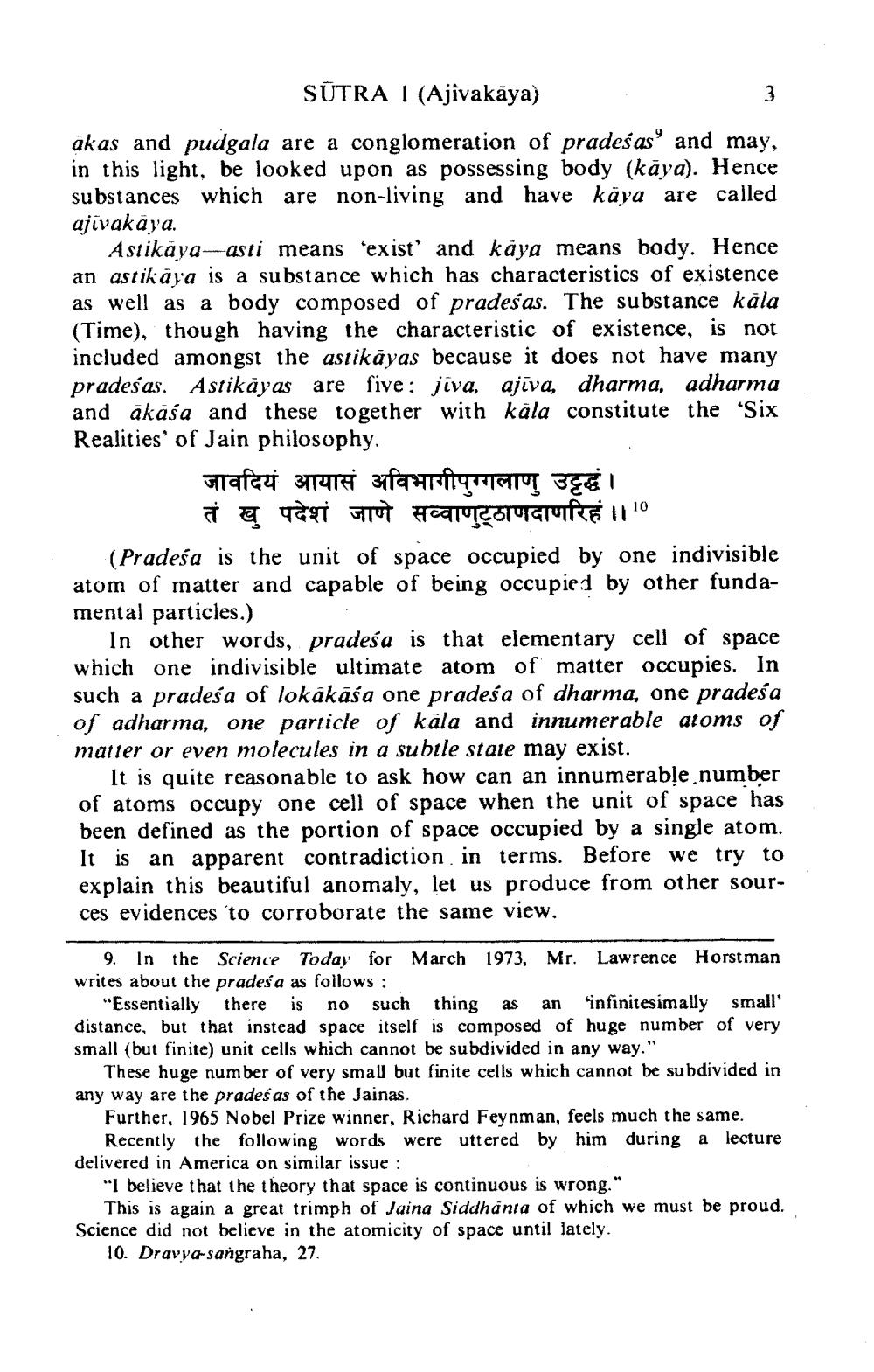________________
SŪTRA 1 (Ajivakāya)
akas and pudgala are a conglomeration of pradeśas" and may, in this light, be looked upon as possessing body (kāya). Hence substances which are non-living and have käya are called ajivakaya.
Astikaya-asti means 'exist' and kaya means body. Hence an astik aya is a substance which has characteristics of existence as well as a body composed of pradeśas. The substance kāla (Time), though having the characteristic of existence, is not included amongst the astikāyas because it does not have many pradeśas. Astikāyas are five: jiva, ajīva, dharma, adharma and akasa and these together with kāla constitute the 'Six Realities' of Jain philosophy.
जावदियं आयासं अविभागीपुग्गलाणु उट्टद्धं ।
तं खु पदेशं जाणे सव्वाणुट्ठाणदाणरिहं ।। 10 (Pradeśa is the unit of space occupied by one indivisible atom of matter and capable of being occupied by other fundamental particles.)
In other words, pradeśa is that elementary cell of space which one indivisible ultimate atom of matter occupies. In such a pradesa of lokākāśa one pradeśa of dharma, one pradeśa of adharma, one particle of kala and innumerable atoms of matter or even molecules in a subtle state may exist.
It is quite reasonable to ask how can an innumerable number of atoms occupy one cell of space when the unit of space has been defined as the portion of space occupied by a single atom. It is an apparent contradiction in terms. Before we try to explain this beautiful anomaly, let us produce from other sources evidences 'to corroborate the same view.
9. In the Science Today for March 1973, Mr. Lawrence Horstman writes about the prades a as follows:
"Essentially there is no such thing as an 'infinitesimally small' distance, but that instead space itself is composed of huge number of very small (but finite) unit cells which cannot be subdivided in any way."
These huge number of very small but finite cells which cannot be subdivided in any way are the pradeśas of the Jainas.
Further, 1965 Nobel Prize winner, Richard Feynman, feels much the same.
Recently the following words were uttered by him during a lecture delivered in America on similar issue :
"I believe that the theory that space is continuous is wrong."
This is again a great trimph of Jaina Siddhanta of which we must be proud. Science did not believe in the atomicity of space until lately.
10. Dravya-sangraha, 27.




